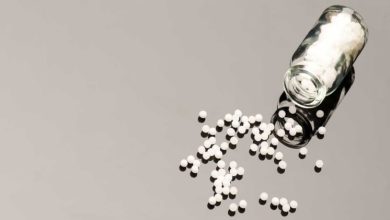What is hydroxocobalamin, and is it used for?

What is hydroxocobalamin?
Hydroxocobalamin is a synthetic version of vitamin B12 available as an injectable form to treat dangerous diseases. In your body, hydroxocobalamin is converted into methylcobalamin and adenosylcobalamin, active forms of vitamin B12. These two active forms act as cofactors that help your body with DNA and protein synthesis, fat metabolism, and support neuron functioning. Thus, your body cannot tolerate the vitamin B12 scarcity.
What is hydroxocobalamin used for?
Hydroxocobalamin is used for the treatment of vitamin B12 deficiency, cyanide poisoning, and eye irritation. The hydroxocobalamin injections are inserted into your muscles or under the skin layers.
Hydroxocobalaminalso promotes methionine synthesis from homocysteine.
Vitamin B12 deficiency:
You may experience vitamin B12 shortage for many reasons that lead to pernicious anemia, stomach, and nervous problems. The primary sources of vitamin B12 are animals; vegetables do not provide enough content. The other reason may be that your body is deprived of a protein that binds with vitamin B12. Whether your lifestyle also induces vitamin B12 deficiency. If you are alcohol addicted, smoking addict and take certain medicines that reduce the absorption of vitamin B12.
Hydroxocobalamin injections are used to treat pernicious anemia (a condition in which your body does not absorb vitamin B12 and reduce the formation of red blood cells). It replenishes the deficiency of vitamin B12. If you have too low level of vitamin B12, you may get 3-4 injections per week.
Cyanide Poisoning:
You may whether consider the potential threat of cyanide. Cyanide is known as a death chemical; causes the death of cells. Cyanide can enter your body through your skin, breathing, and swallowing. Hydroxocobalamin is an antidote for cyanide poisoning and most safe than other treatments.Visit here for movie KuttyWap
Hydroxocobalamin combines with cyanide and converts it into nontoxic form cyanocobalamin that is removed from your body via urine. The intravenous (IV) hydroxocobalamin form is used to treat cyanide poisoning, is approved by FDA.
Since decades, it has been used to treat severe cyanide poisoning in Europe, even though it was approved recently as a cyanokit in the United States.
Hydroxocobalamin is also used to treat eye irritation problems.
How to inject hydroxocobalamin?
While you are experiencing vitamin B12 deficiency, talk to your doctor before starting the treatment. Inform your doctor if you already have high blood pressure, heart disease, kidney disease, and other diseases.
However, hydroxocobalamin is safe for pregnant and lactating women; it will not affect your baby.
Hydroxocobalamin is available in liquid form inserted into the muscles (Intramuscular) or beneath the skin (Subcutaneous).
You may receive a hydroxocobalamin injection from your doctor or nurse. You can also do this task at your home carefully.
This treatment period varies; how long it will depend on you and how you will respond to treatment.
Your doctor selects the hydroxocobalamin injection dosage because he knows your condition and how much you require it.
What are the side effects of hydroxocobalamin?
You may know that side effects are linked with every drug; some drugs have severe effects and others show benign effects. Hydroxocobalamin shows fewer effects that may irritate you, including;
- Swelling, pian where you got the injection
- Diarrhea
- Headaches, and feeling sleepy, etc.
If notice any serious side effects such as; irregular heartbeats (palpitations) and severe allergic reactions, immediately visit your professional.
Conclusion:
Hydroxocobalamin is a man-made version of vitamin B12 manufactured via bacterial fermentation. It replenishes the vitamin B12 deficiency in your body and treats many disorders that arise due to vitamin B12 deficiency, like; prenomina anemia. It is also used to diminish the cyanide activity in your body. It is only available on doctor’s prescriptions.
Reference:
https://www.ncbi.nlm.nih.gov/books/NBK557632/






One Comment